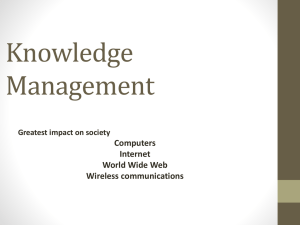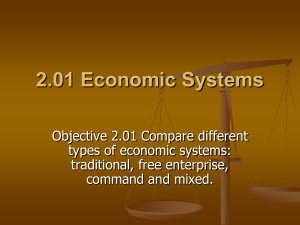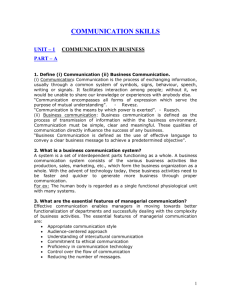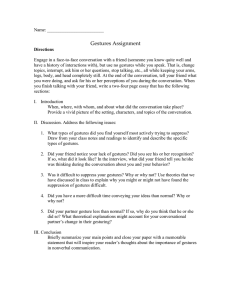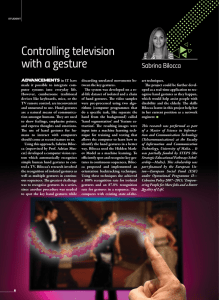Organizational Behavior 10e
advertisement
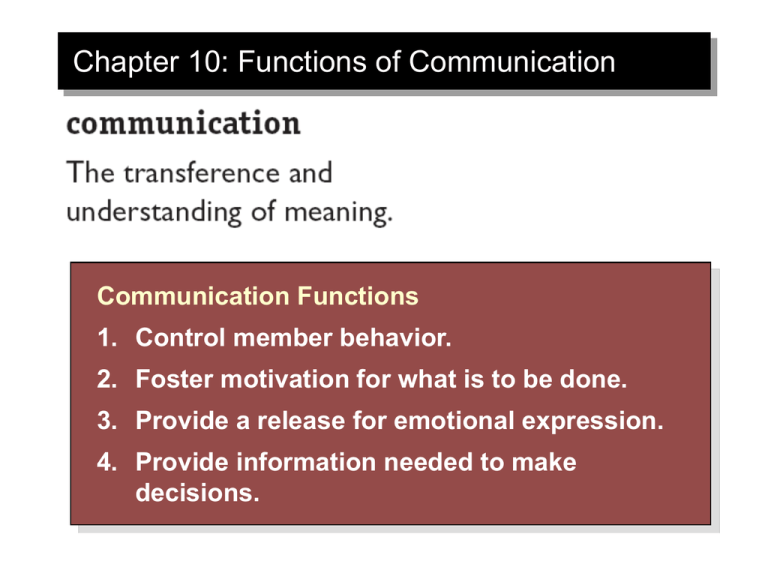
Chapter 10: Functions of Communication Communication Functions 1. Control member behavior. 2. Foster motivation for what is to be done. 3. Provide a release for emotional expression. 4. Provide information needed to make decisions. The Communication Process Model Interpersonal Communication Oral Communication – Advantages: Speed and feedback. – Disadvantage: Distortion of the message. Written Communication – Advantages: Tangible and verifiable. – Disadvantages: Time consuming and lacks feedback. Nonverbal Communication – Advantages: Supports other communications and provides observable expression of emotions and feelings. – Disadvantage: Misperception of body language or gestures can influence receiver’s interpretation of message. Grapevine Grapevine Characteristics – Not controlled by management. – Perceived by most employees as being more believable and reliable than formal communications. – Largely used to serve the self-interests of those who use it. – Results from: • Desire for information about important situations • Ambiguous conditions • Conditions that cause anxiety Suggestions for Reducing the Negative Consequences of Rumors Computer-Aided Communication E-mail – Advantages: quickly written, sent, and stored; low cost for distribution. – Disadvantages: information overload, lack of emotional content, cold and impersonal. Intranet – A private organization-wide information network. Extranet – An information network connecting employees with external suppliers, customers, and strategic partners. Videoconferencing – An extension of an intranet or extranet that permits face-to-face virtual meetings via video links. Emoticons: Showing Emotion in E-Mail Hand Gestures Mean Different Things in Different Countries Hand Gestures Mean Different Things in Different Countries (cont’d)



